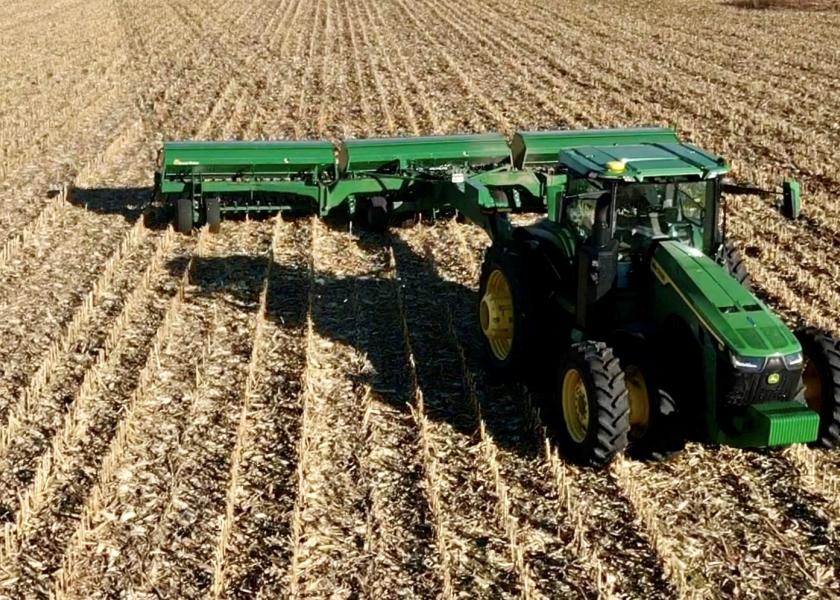Hitting Pay Dirt with Regenerative Ag

By Kathy Meyer
From the farm level to downstream manufacturers of consumer-packaged goods, regenerative agriculture is changing how and what ag retailers sell to their farmer-customers.
“Today we’re at an intersection where agronomy meets conservation,” says Joel Wipperfurth, Truterra director of sales. “Ag retailers are developing their technical assistance with employees that possess backgrounds not only in agronomy but also in data analysis, environmental sciences and biology. Retailers can bring this technical assistance to farmers to help make decisions about implementing or expanding sustainable practices.”
By combining expertise across multiple disciplines, retailers are able to expand their offerings and layer on new products and services for farmers.
“Adding an environmental lens to crop production puts the ag retailer in a good position. Trusted advisers can bring new ideas, products and services to improve soil health, increase nutrient efficiency and sustainability to farmers who want to expand or adopt regenerative practices—all while increasing profitability and the value of their land,” Wipperfurth says.
A go-to resource is key for a new practice.
“Farmers ask questions about barriers to adding new regenerative practices, and that’s where ag retailers see an opportunity to step in and suggest solutions such as seeding equipment, residue management, starter fertilizer, plant growth regulators and others as needed,” Wipperfurth says.
Take Barriers Off the Table
At Illini FS in east-central Illinois, regenerative ag via a cover crop program is quickly expanding business in the retailer’s five-county service area. Drew Hewitt, seed and agronomy manager, reports that almost 3,000 acres of cereal rye were planted into standing corn stalks and soybean stubble in 2022. This past year, the retailer added a second drill—boosting seeded cover crops to almost 4,000 acres.
“Not only are we gaining sustainability benefits from the cover crop acres, we’re also seeing positive yield results,” says Hewitt.
The springboard for the program was thinking about what’s possible rather than obstacles.
“Our business serves farms with flat, black, highly productive soils for growing commercial corn and soybeans,” he explains. “We challenged ourselves to think about how cover crops would be received by our customers. Cover crops aren’t for everyone, but everyone has a fit for some cover crop on their farm. Locally, we feel that many farmers don’t implement cover crops because they don’t have the extra time, manpower or equipment.”
Illini FS supplies the manpower and equipment to custom-seed a cereal rye cover crop following corn and soybeans. It partners with Great Plains to provide a drill, and Illini FS employees and technical crop consultants ensure timely seeding and follow recommendations for terminating the cover crop and planting the subsequent corn or soybean crop.
Two Prong Benefits
Applying a long-term lens, Illini FS has diversified its business and built a program that has longevity—rather than focus on a one-time change. An important part of that equation has been the financial side and return on investment.
“Cover crops help expand our business while evaluating the soil health benefits and economics for our farmers,” says Hewitt. “Soil health may be enough for farmers to spend the extra money, but they also want to see an economic return. Programs are available for funding, but we want farmers to continue when it’s gone.”
Regenerative ag’s return on investment often requires a different timetable for returns as well as technology to help measure the gains.
Illini FS uses Nu-Tracker Plus, a tracking system that evaluates nitrogen and other essential nutrients in soil. Farmers can compare ROI for nutrient investments in soils with cover crops with ROI in soils that haven’t had cover crops. The system also helps the retailer make variable-rate fertilizer prescriptions.
“Ag retailers can embrace regenerative ag practices as a way to bring innovations and ideas to farmers,” says Ryan Locke, Nutrien Ag Solutions’ director of sustainability partnerships. “We’ll continue to sell synthetic fertilizers and ag chem, but changes in local practices and sustainable products will create a pathway for getting new systems and technologies adopted.”
Part of the Future
Nutrien invests in education to arm retail locations with the information and tools to make sustainable agronomic and economic recommendations, says Locke. “We’ve put technical resources in the hands of our retailers to advance practices such as low-carbon fertilizers, variable-rate precision application, drone analysis and soil testing—plus all the ‘nuts and bolts’ of data analysis.”
Locke says Nutrien is also applying technology to enable ag retailers to show farmers the changes possible and measure the results.
“Our retailers can also access the Agrible digital platform, which connects farmers to local agronomic experts to measure environmental outcomes as they continue to make a sustainable impact,” he says.
Working together, ag retailers are helping amplify and scale regenerative ag among their farmer-customers.
Locke adds, “Farmers are being challenged with ‘big asks’ to profitably and sustainably produce more food on the same soil while maintaining the land’s resiliency for future generations. It’s a race to feed a growing population, and ag retailers play an important role in shaping how farmers win the race.”







